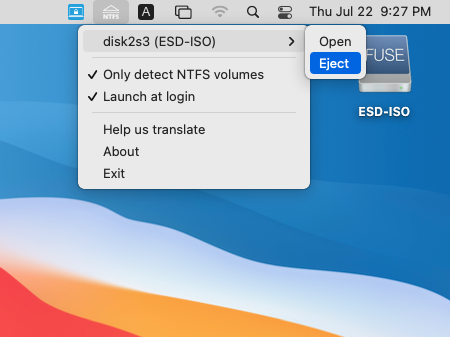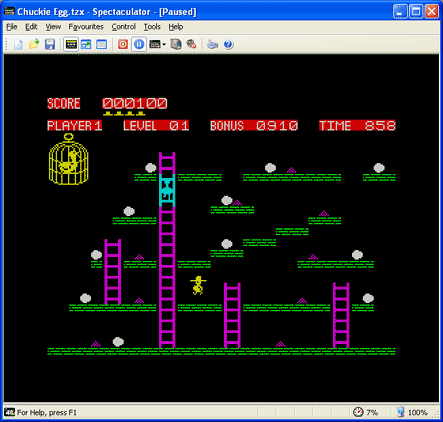

- #FUSE EMULATOR FOR MAC HOW TO#
- #FUSE EMULATOR FOR MAC INSTALL#
- #FUSE EMULATOR FOR MAC UPDATE#
- #FUSE EMULATOR FOR MAC SOFTWARE#
- #FUSE EMULATOR FOR MAC CODE#
"The aim is to achieve binary compatible support for Darwin/OS X applications on Linux, plus provide useful tools that will aid especially in application installation," Doležel's project page states. A developer from Prague named Luboš Doležel is trying to change that with " Darling," an emulation layer for OS X. There has been no robust equivalent allowing Mac applications to run on Linux, perhaps no surprise given that Windows is far and away the world's most widely used desktop operating system.

#FUSE EMULATOR FOR MAC SOFTWARE#
Linux users who want to run Windows applications without switching operating systems have been able to do so for years with Wine, software that lets apps designed for Windows run on Unix-like systems. 45 PRINT totalĪ version of this article originally appeared in an issue of Linux Format Magazine. If you would like to add a running total to the code, add a new line, 45 which prints the total each time the for loop iterates.
#FUSE EMULATOR FOR MAC CODE#
The code will add each number together and once all five are entered it will show the final amount. Press R to trigger RUN to appear on the screen. Type 60 and insert PRINT (SHIFT + P) to print the value stored in the total variable.
#FUSE EMULATOR FOR MAC UPDATE#
This will update the value stored in c, used to control our FOR loop. Type 50, then press SHIFT + N to insert NEXT, then add the variable c. Type 40 and using another LET (SHIFT+L) we update the value stored in the total variable, adding the next integer to the sum. The INPUT keyword takes an extra argument that enables the prompt to ask a question / give an instruction to the user.

Type 30 and press SHIFT + I to insert the INPUT keyword, this will capture the numbers from the user and save them to a variable called “a”. This creates a for loop that will iterate five times. Type 20 and then press SHIFT + F to insert FOR, then type c=1 and press CTRL + F to insert TO. This is used to create a variable, total, and store the integer value of zero. Type 10 to start the line, then press SHIFT + L to insert LET.
#FUSE EMULATOR FOR MAC HOW TO#
It demonstrates how to create a for loop, and create variables in BASIC.ġ. These numbers are added together to produce a sum at the end. The code will loop round five times, asking for a number each time. The BASIC code for this project is a little more complicated than before. So to write the simple Hello World script. Firstly it shares the same multiple function per key keyboard layout that all Sinclair machines have. So let's fire up a little BASIC code and learn a few of its quirks. When Fuse starts we are presented with the 48K BASIC interpreter. $ fuse Getting to Grips With BASIC and Fuse Once installed, launch the application by typing this command.
#FUSE EMULATOR FOR MAC INSTALL#
Open a terminal and type the following to install the Fuse app and Spectrum machine ROMs. Fuse is considered the de facto emulator for Sinclair machines. We installed Fuse (Free Unix Spectrum Emulator) on Ubuntu 18.04. Can emulation give us the same nostalgic glow, can we create BASIC code projects and what is the best way to emulate a ZX Spectrum? Below, we show you two methods: one which turns your Raspberry Pi into a Spectrum and another which gives you a simple emulator that should work in Ubuntu and other flavors of Linux. It is here where we start our journey into emulating the ZX Spectrum machines, chiefly the 48K and 128K aka “The Toastrack”. The first ZX spectrum, released in 1982 introduced the rubber keys and diminutive size of the iconic classic computer. The ZX81 was a success and from that initial success more “ZX” machines were released with better graphics, and infamous rubber keys.

An agreement with Timex saw the ZX81 hit the US market as the Timex Sinclair 1000, and an unauthorised clone, the TK85 was released in Brazil via Microdigital Eletronica. The ZX81 released in 1981 and retailing for half the price of the ZX80 addressed this and other issues while providing a solid base for learners eager to code. The ZX80 proved a cost effective means to get your first computer and learn how to code but it did have a few quirks, famously causing the screen to flicker as each key was pressed. But, in 1980, Sinclair's company released the ZX80 computer for £99.95 and it was marketed as the “first personal computer for under £100”.


 0 kommentar(er)
0 kommentar(er)
